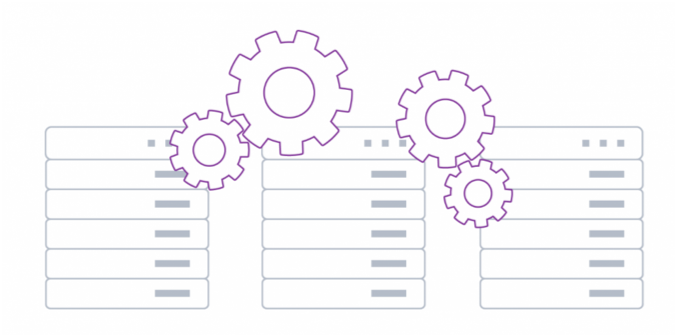As technology continues to evolve, so does the way we need to deploy and manage it. Today, enterprises demand that infrastructure have the flexibility and agility needed to rapidly respond to quickly changing business needs.
While flexibility and agility are easy to say, how easy is it to deliver? Many of us look to the public cloud as the standard for modern infrastructure. We request a new service or application, and in the background, it is provisioned automatically and consistently. No matter how often we “stand up” this infrastructure or scale it, we get a predictable experience. If we think about how public cloud providers deliver this experience at the speed and scale that they do, we can be pretty sure it is not done using traditional methods, deployed individually by hand and relying on models and processes that can take six months!
To deliver a cloud-like experience, we have to rethink how we build infrastructure – from servers and operating systems, to storage and networking. An important part of this rethink is a move to an increasingly software-defined approach, extracting the capabilities of our infrastructure from the boundaries that may restrict it.
 Recently I spent some time chatting with Cumulus Networks regarding their own software defined networking strategy, “Infrastructure with purpose.” Their message resonated strongly with an aim to help enterprises deliver infrastructure in new ways, to meet rapidly changing demands and deliver beneficial outcomes – whether that is better services, products, or to improve efficiency and lower costs.
Recently I spent some time chatting with Cumulus Networks regarding their own software defined networking strategy, “Infrastructure with purpose.” Their message resonated strongly with an aim to help enterprises deliver infrastructure in new ways, to meet rapidly changing demands and deliver beneficial outcomes – whether that is better services, products, or to improve efficiency and lower costs.
How does this infrastructure with purpose strategy help?
It begins with a change in focus. Traditionally our network infrastructure was built from the network component point-of-view. We picked our hardware platform and from there we were driven by its capabilities, design limitations, and management toolset. Those infrastructures were built, almost as works of art, crafted by a team of skilled network engineers. When they finished, it was presented to our applications teams who then designed their applications infrastructure within the limitations of the network.
Building a robust network with care is not a criticism. However, today our applications matter as much as the infrastructure they run on and that infrastructure must deliver the flexibility and scale that we demand. As stated earlier, we increasingly need our enterprise technology to behave in the way our public cloud platforms do.
To deliver our applications, potentially across multiple locations and regions, we will need to scale both applications and its supporting infrastructure quickly and consistently while maintaining control of both the infrastructure and the costs to deploy and operate it. We can’t be restricted by limitations of specific hardware, significant manual configuration, or the need to scale up our network team every time we scale our application.
The only way we can deliver “infrastructure with purpose” is to be able to automate as much of our deployment as possible. We need to remove repetitive tasks from our engineering teams. This is a key tenant of software defined infrastructure and Cumulus’s approach. The ability to automate the deployment of networking infrastructure at scale while ensuring consistency and predictably is core to modern infrastructure and delivers numerous benefits.
When we have a consistent deployment, we see improvements in performance. We reduce management overhead and we reduce time to resolution when faced with infrastructure problems. Inside any modern enterprise, consistency greatly reduces security risks; and security risks are often introduced when we ask humans to carry out repetitive tasks at scale.
Also core to the “Infrastructure with purpose” approach is that it should be delivered using standard and recognizable tools. At the heart of Cumulus’s approach is Cumulus Linux, a Linux distro that allows us to deploy a network at scale using tools we are already familiar with and potentially are already a part of our automation and management toolsets. In the modern infrastructure stack, we can’t afford for parts of our infrastructure to constantly need significant investment in new management tools and retraining. We need all parts of it to be familiar and integrate seamlessly into the other components that drive it.
As we look at how to build our modern infrastructures, software defined is going to play a significant part. Without it, we are unlikely to deliver “infrastructure with purpose” or infrastructure capable of meeting modern enterprise demands.

While it’s clear that delivering in this way is crucial to building a “cloud-like” experience, how do we practically go about it? In part two of this series, we will look at how Cumulus and their networking tools can allow us to build a modern and scalable network infrastructure.

